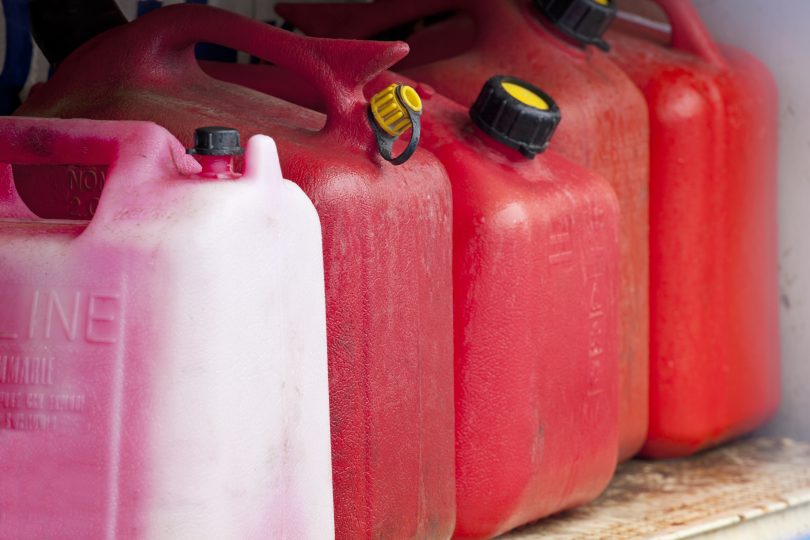
As fuel prices remain high, is the best option really to stock up and keep it in storage? Photo: File.
As he walked through his unit building’s basement car park one day, Angus* spotted something which concerned him immensely – close to 100 litres of fuel being stored in jerry cans.
His immediate thought was of the regular fire alarms – both real and false – which building residents have become accustomed to and of experiences in the past where fires have taken place in the complex.
“One of the units was burnt out after a fire and others were smoke damaged,” he said.
It’s not that Angus doesn’t understand why someone would be storing fuel at the moment given the uncertainty around prices at the pump. It’s that he doesn’t think there should be quite that much in storage in a building basement like that.
So he went on a super sleuth hunt to find out whether there were any rules governing how much fuel can be “safely” stored in the ACT.
What he found – or didn’t find – shocked him. There don’t seem to be any local guidelines at all.
Australian guidelines seem to set out that the maximum amount of fuel that can be transported is 250 litres. But that still doesn’t clear up how much someone could ostensibly keep in storage.
“The biggest issue I have is that if there are no rules about how much you can store – it’s only going to be a matter of time until there’s a massive accident in Canberra,” he said.
There is some information online – but it’s dated 2010 – about storing fuel in NSW. The rules seem to be that 5 litres was the most you could store in your house and 25 litres in a garage as long as the wall between that and the house was fire-rated.
Then, you could store 100 litres in a shed or outdoors, as long as you’re one metre from other dwellings and 250 litres in a structure three metres from other dwellings.
Region Media approached multiple local agencies to find out if they could provide any advice.
The Emergency Services Agency said they didn’t know but passed on a request for comment to Access Canberra, saying they would be the people in charge of that.
But Access Canberra also didn’t have any information. They said WorkSafe would know.
And while WorkSafe ACT was able to provide a fair chunk of legislation that governs workplaces, it wasn’t able to provide any information about private residences.
WorkSafe ACT provided the following comment: “the main hazards associated with fuel storage, or the storage of any flammable liquids, are outlined in the Guide published by Safe Work Australia – Storage of flammable liquids.
“Flammable liquids are a common source of fuel for fires and explosions as they produce flammable vapour and ignite at low temperatures. Many fires start when flammable liquids are spilt, or their containers are left open, and their vapours reach an ignition source such as an open flame.”
But Angus doesn’t think it is enough.
“We should have some clear regulations on the matter,” he said.
*Name has been changed upon request.












